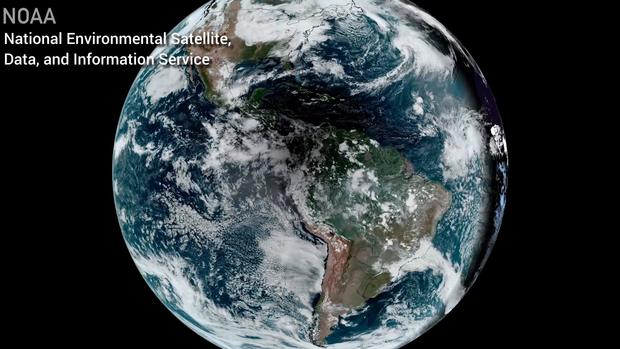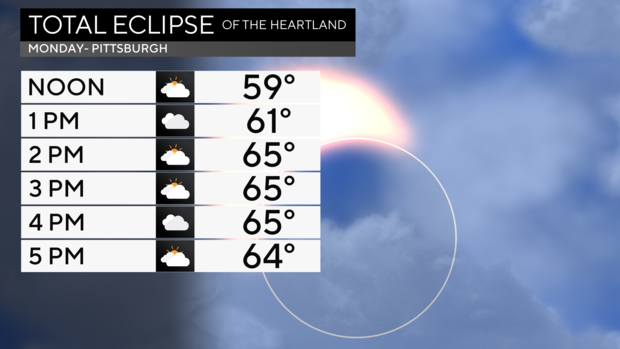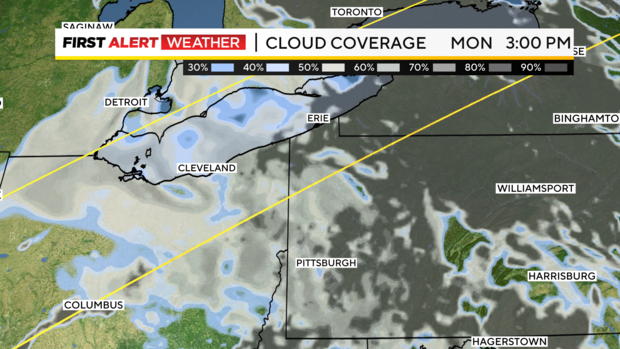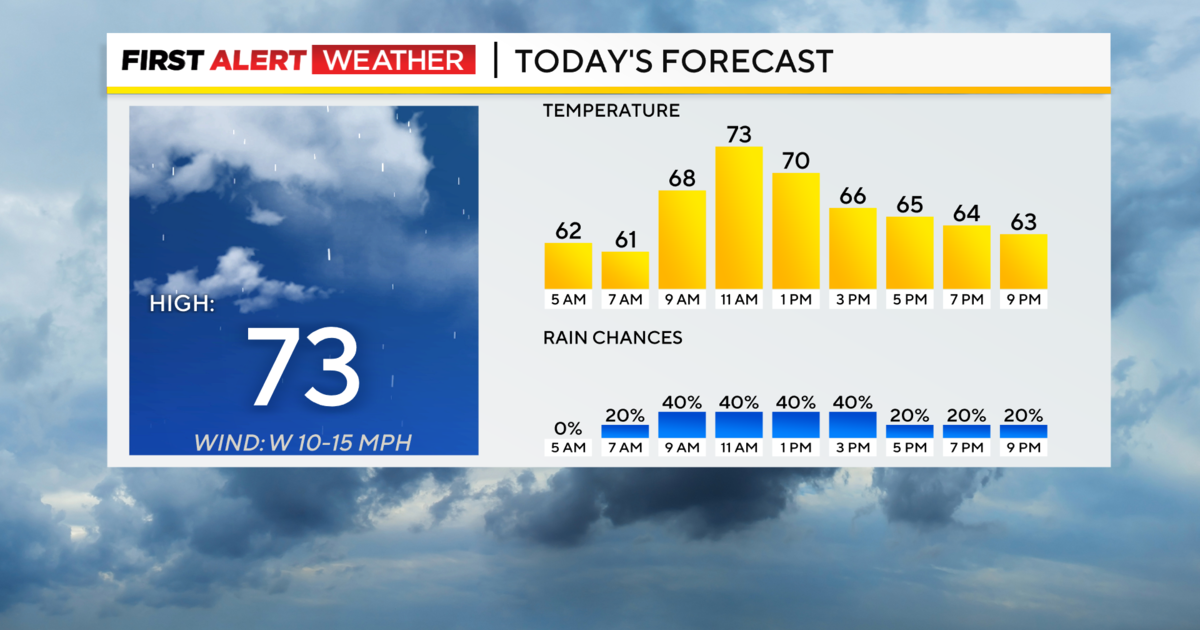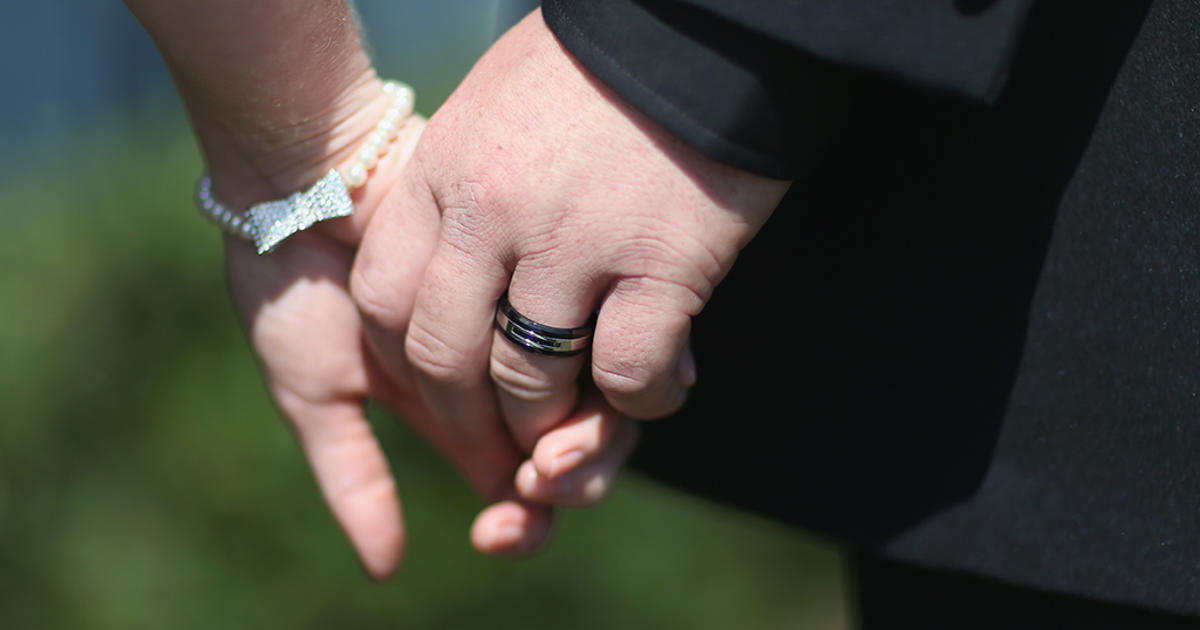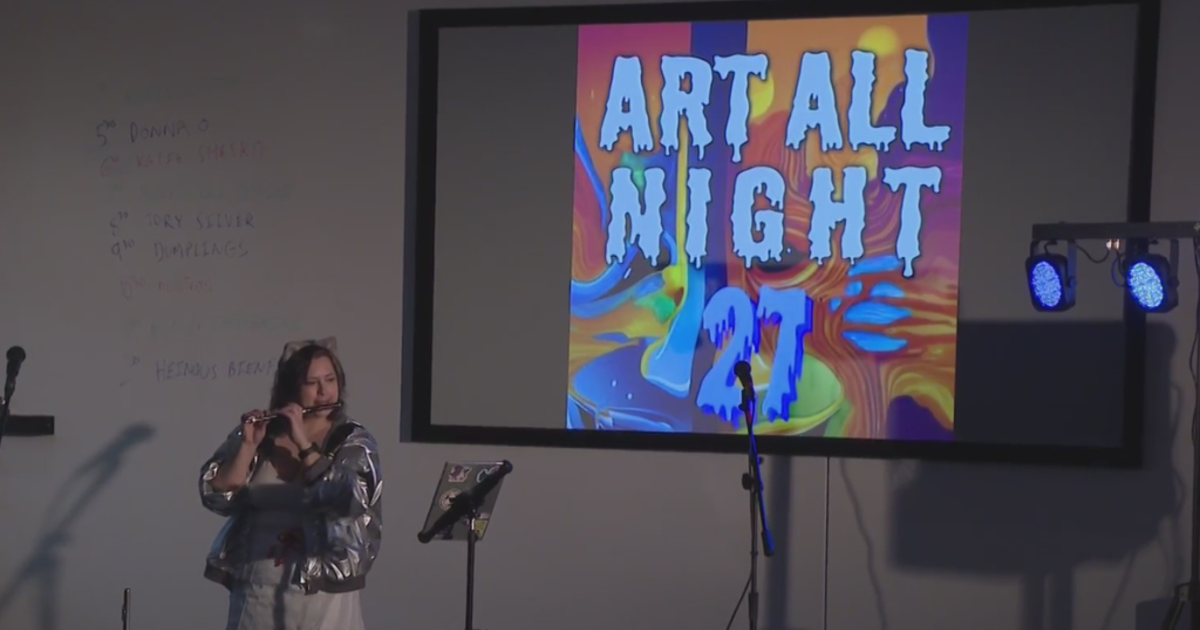Your guide to the solar eclipse in Pittsburgh. The forecast, where to watch, and a KDKA playlist
PITTSBURGH (KDKA) -- When the moon's shadow darkens the sun on Monday afternoon, it will be visible to millions of people across the United States, including here in Western Pennsylvania
While Erie, Pennsylvania, is in the eclipse's path of totality; here in Pittsburgh, 97% of the sun will be blocked out by the moon.
If you can't make it to Erie or don't want to brave the heavy crowds this rare celestial event will bring to our northern neighbor, there are plenty of ways to enjoy the eclipse here in Pittsburgh.
Here is what you need to know, starting with the eclipse timeline for Pittsburgh, courtesy of the Carnegie Science Center.
Eclipse starts: 2 p.m.
Eclipse ends: 4:30 p.m.
Maximum eclipse: 3:17 p.m.
For the full eclipse timeline across the U.S., click here.
For more solar eclipse content on KDKA.com, click here.
What is a solar eclipse?
First Alert Meteorologist Ray Petelin breaks it down in this Hey Ray! segment. And, visit this link, for more on the science behind solar eclipses.
The moon is passing between the sun and the earth. You likely knew that. You likely also know that everyone doesn't get to see the total solar eclipse. That is reserved for people in a very distinct path.
That distinct path of totality happens because of how the moon casts a shadow toward Earth. You can see this shadow from space.
For a total solar eclipse, the umbra is the part of the shadow you want to be in. This is the dark, inner shadow the Moon is casting toward Earth. Everyone in this shadow can see the total solar eclipse. This is where the Sun is completely blocked.
The penumbra is the lighter, outer shadow cast by the Moon toward Earth. This is where you can see a partial eclipse. This encompasses a much larger area because the penumbra gets larger as it moves away from the Sun toward Earth. The umbra gets smaller.
Total solar eclipses are rare, and there is a reason for that. According to the National Weather Service, a solar eclipse only can happen during the New Moon phase.
Also, the Moon's orbit is tilted five degrees from Earth's orbit as they travel around the Sun. This means that, from Earth, it appears that the Moon is often passing above or below the Sun when it is passing between them.
Putting this all together, you need to time out a new moon phase with the Moon being in the correct orientation to pull off a solar eclipse!
The 200-mile path of totality
About 31.6 million people live in the 200-mile path of totality — the path where the total solar eclipse will be visible, according to NASA.
After passing over Mexico in the early afternoon, southern Texas will see the full total eclipse around 1:40 p.m. local time. Parts of Oklahoma will see the full eclipse starting at 1:45 p.m., then Arkansas at around 1:51 p.m. and southeast Missouri around 1:56 p.m.
The total eclipse will hit Illinois, Kentucky and Indiana around 2 p.m. and Ohio around 3:13 p.m.
Parts of Pennsylvania will then start to see the total eclipse around 3:16 p.m. and parts of northwestern New York will see it shortly after at 3:18 p.m.
It will then move over parts of Vermont, New Hampshire and Maine before hitting Canada around 4:25 p.m.
Now that we've covered the basics, what are some Pittsburgh solar eclipse events?
For Monday's solar eclipse, the Carnegie Science Center has activities for the whole family.
At the Rangos Giant Cinema, "Astronaut: Ocean to Orbit" has screenings that start at 10:30 a.m. on Monday. The film "explores the ways in which NASA uses underwater environments to simulate life and work in space, offering a fascinating look into the high-tech world of astronauts."
Guests can also explore the chemistry of ice cream at the BodyStage.
At the Works Theaters, you can learn space chemistry, partake in explosive experiments or watch a live stream from NASA of the solar eclipse!
If none of these is the right event for you, check out the other eclipse-themed demos throughout the Carnegie Science Center on Monday.
For eclipse fun for the kiddos, the Children's Museum of Pittsburgh has plenty of activities. Beforehand, families can make pocket pinhole projects, celebrate the sun with cyanotypes and draw shadows outdoors. During the eclipse, museum staff will share glasses with visitors so they can safely watch the eclipse in Buhl Park.
The Allegheny Observatory will also host a viewing in Riverview Park from 2 p.m. to 4:30 p.m., providing glasses while supplies last.
Primanti Bros. is offering free beer to celebrate the once-in-a-lifetime event.
The CEO says they are celebrating both the eclipse and the men's and women's NCAA finals. The giveaway is happening Sunday and Monday at participating locations. Each customer is limited to just one free beer.
Oakmont Bakery is also making eclipse-themed treats.
Your Pittsburgh solar eclipse forecast
Starting at 2:01 p.m., the Partial Eclipse begins with 97% visibility in Pittsburgh at 3:17 p.m. The partial Eclipse ends at 4:30 p.m. with decreasing clouds through the evening. Temperatures are expected to drop several degrees during this time as the moon passes between the Earth and the sun, casting a shadow on Earth and partially blocking out view of the sun -- Mary Ours' Monday forecast
Full forecast here.
Solar eclipse glasses
First, you never want to look directly at the sun. This can cause permanent damage to your eyes. To be clear, "permanent" means looking at the sun without protection could result in lifelong vision problems. When viewing the sun or the eclipse, you need to protect your eyes with special glasses made specifically for viewing an eclipse!
Sunglasses are NOT sufficient to protect your eyes. You will want to use solar eclipse viewing glasses. These shade out everything so you can only see the sun. As the eclipse occurs, you will be able to clearly see it in these glasses. You can even get a shade to protect your electronic equipment, and better see the eclipse.
These can be found online, and are relatively inexpensive if you buy them early enough. The closer you get to the eclipse, the more expensive they get and the harder they become to find! When you get these glasses, you want to make sure to get ones that are specifically rated to look at the sun.
- For more on these glasses, check out this Hey Ray! segment.
- Planning to take photos? For tips on how to protect your camera during the eclipse, click here.
Why the solar eclipse is important to our First Alert Meteorologists
Ray Petelin --
"I like that total eclipses are rare and all the math involved to predict them. We can predict these way out in advance because of math and our understanding of our motion in the solar system!"
Kristin Emery --
"It's such a rare event, it's fascinating to learn about and study the science behind it and it's something people can enjoy no matter what their age."
Hey Ray! tell us about the solar eclipse
KDKA-TV Meteorologist Ray Petelin has everything you need to know before heading outside. including safety tips and things to look for!
- Make sure you sound like an expert when watching the solar eclipse
- Is there anything to do if it is cloudy during the total solar eclipse?
- Don't forget to look for weird-looking shadows during the solar eclipse
- Why are glasses needed for the solar eclipse?
- Now is the time to brush up on how to make solar eclipse pinhole viewers
- Taking a closer look at the specifics of the total solar eclipse
For more Hey Ray! segments, click here.
The KDKA Solar Eclipse Playlist
We asked our First Alert Meteorologists what they'd put on their solar eclipse playlist.
Ray Petelin is rocking out to "Black Hole Sun" by Soundgarden and "The Dark Side of the Moon" by Pink Floyd.
Kristin Emery will be jamming to "Walking on Sunshine" (she says it always makes her dance) by Katrina and the Waves and "King of Pain" by The Police, because growing up, she loved the lyrics "There's a little black spot on the sun today."
Ron Smiley's pick is the classic "Ain't No Sunshine" by Bill Withers.
You can listen to their picks here, as well as some other suggestions by the KDKA-TV staff.

